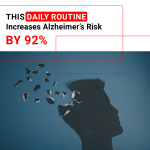Crohn's Disease: Pathophysiology, Symptoms, Risk factors, Diagnosis and Treatments, Animation.
diseases No Comments »(USMLE topics) Crohn disease: pathophysiology, symptoms, causes, risk factors, complications, diagnosis and treatments. This video is available for instant download licensing here: https://www.alilamedicalmedia.com/-/galleries/narrated-videos-by-topics/digestive-diseases/-/medias/47f8d399-6671-487c-909c-2ed1eb5b6a77-crohn-s-disease-narrated-animation
Voice by: Ashley Fleming
©Alila Medical Media. All rights reserved.
Support us on Patreon and get early access to videos and free image downloads: patreon.com/AlilaMedicalMedia
All images/videos by Alila Medical Media are for information purposes ONLY and are NOT intended to replace professional medical advice, diagnosis or treatment. Always seek the advice of a qualified healthcare provider with any questions you may have regarding a medical condition.
Crohn’s disease is one of the 2 major forms of inflammatory bowel disease. Inflammation caused by Crohn’s disease may affect any parts of the gastrointestinal tract, but it most commonly involves the end of the small bowel, the ileum, and the beginning of the colon. The inflammation is not continuous, inflamed segments are usually interrupted by normal healthy tissues.
Most people experience recurrent flares, when the disease is active, followed by symptom-free periods of remission.
Symptoms may differ depending on the parts of the digestive tract that are affected. Most common signs include diarrhea, abdominal pain and tenderness, loss of appetite, weight loss, fatigue and fever. Blood in stools occurs when the colon is involved; nausea and vomiting are usually the signs that the stomach or the first part of the small intestine is affected. About one third of patients present with perianal disease, including abscess, fistulas and ulcers. The disease also often manifests outside the intestine, especially in the joints, skin, and eyes.
Inflammation in Crohn’s disease extends to the entire thickness of the intestinal wall. Deep lesions in the mucosa often alternate with areas of mucosal swelling, creating a characteristic cobblestoned appearance. Extensive inflammation may cause thickening of the bowel wall and hypertrophy of the mesenteric fat that wraps around the intestine (creeping fat). Intestinal wall thickening, together with scar formation, may block the flow of digestive content, leading to bowel obstruction. Ulcers can extend through the bowel wall and form tunnels, called fistulas, which may connect to other loops of the intestine, to abdominal organs, muscles and even skin. A fistula may become infected and form abscesses, which can be life-threatening if not treated. In the long-term, Crohn’s disease may increase risks for colon cancers.
The disease has a major peak of onset between the age of 20 and 30, and a smaller peak later in life. White individuals, people with family history, and smokers are at higher risks.
The exact mechanism of Crohn’s disease is not fully understood, but it likely involves both genetic and environmental factors. Multiple genes are identified, most of which act in the immune system, or in maintaining the gastrointestinal epithelial barrier. This barrier separates the gut content from the underlying immune system, preventing the body from reacting to dietary antigens and resident bacteria of the gut. A crack in the barrier may increase the chance that the immune system overreacts to non-pathogenic antigens from the gut content.
Involvement of environmental factors is evidenced by higher disease incidence in developed countries, especially urban areas.
Diagnosis is made based on a combination of tests and imaging procedures.
Treatments start with dietary management to maintain good nutrition but avoid foods that may exacerbate symptoms. Some patients may benefit from nutrition therapy, a special diet given via a feeding tube or injected into a vein. The therapy provides nutrition while allowing the bowel to rest, reducing inflammation.
A number of medications can be prescribed depending on disease severity and the patient’s response to different drugs. These may include: antidiarrheals, anti-inflammatories, antibiotics, corticosteroids, immunomodulators and biologics.
Abscesses and fistulas are drained and treated with antibiotics.
Nearly half of patients require at least one surgery to manage recurrent intestinal obstructions or complicated fistulas or abscesses. Surgical removal of the diseased parts of the bowel may improve symptoms temporarily, but is not a cure, because the disease is likely to recur, usually near the reconnected tissue.
Video Rating: / 5
Crohn’s disease is difficult to diagnose, because the symptoms overlap with other diseases. Physicals, x-rays, colonoscopies and biopsies aid in diagnosis.
Video Rating: / 5


































































